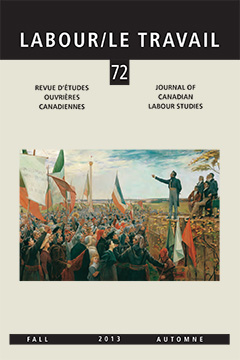Abstract
The Pacific Northwest underwent rapid economic growth in the late 19th century and cities on both sides of the Canada/US border burgeoned. The building boom was sustained by a large cohort of tradesmen and skilled labourers who lived in modest cabins, tenement blocks, boarding houses, and residential hotels. Most of these urban wageworkers were unmarried. They left few records of their experiences outside the job site or union hall. In this case study of Victoria, British Columbia circa 1891, we deployed a historical geographical information system (HGIS) to reconstitute the urban residential and social space of about 2,000 otherwise elusive working men. Our research framework combines qualitative methods that are familiar to historians and quantitative methods favoured by geospatial researchers. By integrating both qualitative and quantitative data, we are able to represent the multiple spatial conditions experienced by Victoria’s wageworkers in the early 1890s. In the process, we repopulated the city and reconstructed a largely vanished urban landscape. A primary objective of the essay is to demonstrate how gis can be used as a research tool and new epistemology in the field of labour history.
La région du nord-ouest du Pacifique a connu une forte expansion économique à la fin du xixe siècle et les villes des deux côtés de la frontière canado-américaine se sont développées rapidement. Le boom de la construction a été soutenu par l’importante cohorte de gens de métier et d’ouvriers qualifiés qui vivaient dans des cabanes modestes, des immeubles locatifs, des pensions et des hôtels-résidences. La plupart de ces salariés urbains étaient célibataires. Ils ont laissé peu de documents attestant de leurs expériences hors de leur lieu de travail ou de leur local syndical. Dans cette étude de cas de la ville de Victoria, en Colombie-Britannique, vers 1891, nous avons déployé un système d’information géographique-historique (SIGH) pour tenter de reconstituer l’espace résidentiel et social urbain d’environ 2 000 travailleurs ayant laissé peu de traces. Notre cadre de recherche conjugue des méthodes qualitatives familières aux historiens et des méthodes quantitatives que préfèrent les spécialistes de la recherche géospatiale. En intégrant les données qualitatives et quantitatives, nous pouvons représenter les multiples conditions spatiales dans lesquelles ont vécu les salariés de Victoria au début des années 1890. Ce processus nous permet de repeupler la ville et de reconstruire un paysage urbain largement disparu. Un des objectifs premiers de cet essai est de montrer comment les systèmes d’information géographique (Sig) peuvent servir d’outils de recherche et de nouvelle épistémologie dans le domaine de l’histoire ouvrière.
